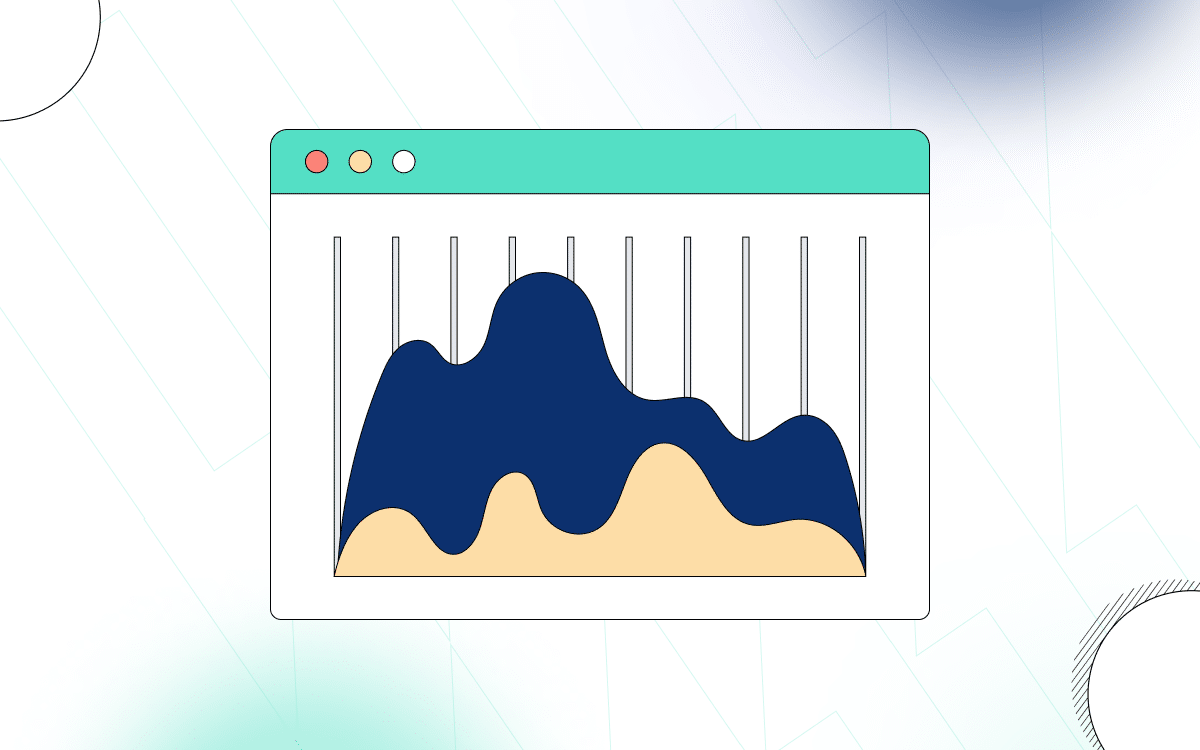Day trading involves buying and selling financial instruments within the same trading day. It requires quick decision-making and market knowledge.
Day trading can be a lucrative venture for those who understand the markets and can act swiftly. Traders aim to capitalize on small price movements in highly liquid stocks or currencies. To succeed, one needs a solid trading strategy, risk management skills, and a disciplined approach.
The rapid pace and high stakes make it essential to stay informed and adapt to market conditions. Beginners should start with thorough research, practice with simulated trading, and gradually move to real trading. Proper education and continuous learning are key to thriving in the fast-paced world of day trading.
Introduction To Day Trading
Day trading involves buying and selling financial instruments within a single day. This method aims to capitalize on small price movements. It requires a good understanding of the market and swift decision-making skills.
What Is Day Trading?
Day trading is a form of active trading. Traders buy and sell stocks within the same day. They do not hold any positions overnight. The goal is to profit from small price changes in a stock. Day traders use technical analysis and chart patterns. They rely on short-term strategies to make profits.
History Of Day Trading
Day trading has a rich history. It began with the inception of stock markets. In the 1970s, the NASDAQ became the first electronic stock market. This allowed quicker transactions. In the 1990s, the internet boom made day trading accessible to everyone. Technology and online trading platforms revolutionized the practice.
| Period | Development |
|---|---|
| 1970s | NASDAQ electronic market |
| 1990s | Internet trading boom |
- Day trading involves buying and selling within a single day.
- Traders aim to capitalize on small price movements.
- It requires market knowledge and quick decisions.
- Understand the basics of day trading.
- Learn technical analysis and chart patterns.
- Use short-term trading strategies.
Essential Concepts
Day trading involves buying and selling securities within the same day. Understanding some essential concepts is crucial for success. This section covers Market Orders, Limit Orders, and Stop Orders.
Market Orders
A Market Order is an order to buy or sell a stock immediately. It ensures the trade is executed quickly. The trade happens at the best available price. This type of order is simple and fast.
Key points about Market Orders:
- Executed immediately
- Ensures quick trade
- Best available price
Limit Orders
A Limit Order sets a specific price to buy or sell a stock. The trade only happens at the set price or better. Limit Orders give control over the trade price. They are useful in volatile markets.
Key points about Limit Orders:
- Specific price set
- Trade at set price or better
- Provides control
Stop Orders
A Stop Order becomes a Market Order when a set price is reached. There are two main types: Stop-Loss and Stop-Limit.
| Type | Description |
|---|---|
| Stop-Loss | Sells stock to limit loss |
| Stop-Limit | Sets a minimum price to sell |
Key points about Stop Orders:
- Becomes Market Order at set price
- Types: Stop-Loss, Stop-Limit
- Manages risk
Tools And Platforms
Understanding the basics of day trading requires knowledge of various tools and platforms. These tools help traders make informed decisions quickly. Let’s dive into the essentials.
Trading Software
Trading software is essential for executing trades. It provides real-time data and analytics. Popular trading software includes:
- MetaTrader 4: Known for forex trading and user-friendly interface.
- Thinkorswim: Offers advanced charting and trading tools.
- NinjaTrader: Great for futures and forex trading.
Choosing the right software depends on your trading needs. Look for features like speed, reliability, and user experience.
Charting Tools
Charting tools help analyze market trends. They display price movements and patterns. Key charting tools include:
- TradingView: Offers customizable charts and social networking features.
- StockCharts: Great for technical analysis of stocks.
- MetaStock: Provides robust charting and analytical tools.
These tools offer various indicators and drawing tools. They help traders spot trends and make predictions.
Brokerage Accounts
A brokerage account is necessary for day trading. It allows traders to buy and sell securities. Important factors to consider include:
| Broker | Features | Fees |
|---|---|---|
| Interactive Brokers | Low fees, advanced trading tools | Commission-based |
| TD Ameritrade | Free trades, powerful platform | Zero commission |
| ETRADE | Educational resources, user-friendly | Zero commission |
Choose a broker with low fees and good customer support. Ensure the platform is easy to use and reliable.

Credit: fastercapital.com
Key Strategies
Understanding the key strategies in day trading can help you succeed. Each strategy has its own unique approach and benefits. Below, we explore three popular day trading strategies: Scalping, Momentum Trading, and Swing Trading.
Scalping
Scalping focuses on making small, quick profits from tiny price movements. Traders using this strategy make many trades in a day. They aim to profit from small price gaps created by order flows or spreads.
- Trades last for seconds or minutes.
- High number of trades per day.
- Requires a fast and reliable trading platform.
Momentum Trading
Momentum trading involves buying stocks that are moving up and selling them before they peak. This strategy relies on market trends and news events. Traders look for stocks with high volume and volatility.
- Identify stocks with strong trends.
- Enter trades based on market momentum.
- Exit trades before the trend reverses.
Swing Trading
Swing trading aims to capture gains in a stock within one to several days. Traders look for short-term price patterns and trends. They use technical analysis to find entry and exit points.
| Criteria | Description |
|---|---|
| Trade Duration | Several days |
| Analysis Method | Technical Analysis |
| Risk Level | Moderate |
By understanding these key strategies, you can choose the one that fits your trading style best. Each strategy offers unique opportunities and challenges. Use this knowledge to enhance your day trading skills.
Risk Management
Risk management is a vital part of day trading. It helps you protect your investments. By managing risk, you can avoid big losses. This section will discuss how to manage risk.
Setting Stop-loss
Stop-loss orders are essential for managing risk. A stop-loss order automatically sells your stock. This happens when it reaches a certain price. This helps limit your loss on a trade.
Setting a stop-loss is simple. Here is how you do it:
- Decide the maximum amount you are willing to lose.
- Set the stop-loss order at that price.
For example, if you buy a stock at $100, you might set a stop-loss at $95. If the stock price drops to $95, your order will sell the stock. This limits your loss to $5 per share.
Diversification
Diversification is a key strategy in risk management. It involves spreading your investments across different assets. This reduces the impact of a single bad trade.
Here are some ways to diversify:
- Invest in different sectors (technology, healthcare, finance).
- Trade multiple stocks instead of just one.
- Include other assets like bonds or commodities.
By diversifying, you can protect your portfolio from significant losses. If one stock performs poorly, others may perform well, balancing the overall risk.
Position Sizing
Position sizing determines how much money to invest in a trade. This helps control risk by limiting the amount of capital exposed.
To calculate position size, follow these steps:
- Determine your total trading capital.
- Decide the percentage of capital to risk on a single trade. Typically, this should be 1% or 2% of your total capital.
- Calculate the dollar amount based on this percentage.
For instance, if you have $10,000 in trading capital and you decide to risk 2%, the amount risked per trade would be $200. This approach ensures that no single trade can significantly harm your overall portfolio.
In summary, risk management involves setting stop-loss orders, diversifying investments, and careful position sizing. These strategies help protect your trading capital and ensure long-term success.

Credit: fastercapital.com
Technical Analysis
Technical analysis is a crucial part of day trading. It helps traders make informed decisions. It involves studying price movements and trends. This section covers key components of technical analysis.
Candlestick Patterns
Candlestick patterns are visual representations of price movements. Each candlestick shows the open, high, low, and close prices. Traders use these patterns to predict future price movements. Here are some common patterns:
- Doji: Indicates indecision in the market. The open and close prices are almost the same.
- Hammer: Signals a potential reversal in a downtrend. It has a small body and long lower wick.
- Engulfing: A larger candlestick completely engulfs the previous one. It indicates a potential trend reversal.
Moving Averages
Moving averages help smooth out price data. They create a constantly updated average price. This average helps identify trends over time. Common types of moving averages include:
- Simple Moving Average (SMA): The average price over a specific period.
- Exponential Moving Average (EMA): Gives more weight to recent prices. It reacts faster to price changes.
Moving averages are used to identify support and resistance levels. They also help signal potential buy or sell opportunities.
Indicators
Indicators are mathematical calculations. They are based on price, volume, or open interest. They help traders make decisions. Some popular indicators include:
- Relative Strength Index (RSI): Measures the speed and change of price movements. It ranges from 0 to 100. Values above 70 indicate overbought conditions. Values below 30 indicate oversold conditions.
- Moving Average Convergence Divergence (MACD): Shows the relationship between two moving averages. It helps identify potential buy and sell signals.
- Bollinger Bands: Consist of a middle band (SMA) and two outer bands. The outer bands are standard deviations away from the middle band. They help identify overbought or oversold conditions.
Using these tools can help improve trading strategies. They provide valuable insights into market trends and potential price movements.
Psychological Aspects
Understanding the psychological aspects of day trading is crucial. A trader’s mind can make or break their success. This section dives deep into the key psychological factors that affect day trading.
Emotional Control
Emotional control is vital in day trading. Fear and greed are common emotions that can cloud judgment. Traders must learn to keep their emotions in check. Staying calm helps in making rational decisions. Practice techniques like meditation and deep breathing to manage stress.
- Stay calm under pressure.
- Control fear and greed.
- Use meditation to reduce stress.
Discipline
Discipline separates successful traders from the rest. Following a trading plan is essential. This includes sticking to entry and exit points. Avoid making impulsive decisions. A disciplined trader follows their strategy no matter what.
- Create a clear trading plan.
- Stick to your entry and exit points.
- Avoid impulsive decisions.
Trading Psychology
Trading psychology involves understanding your own mind. Knowing your strengths and weaknesses is key. Self-awareness helps in improving your trading habits. Keep a trading journal to track your mental state. Analyze your mistakes and learn from them.
| Aspect | Importance |
|---|---|
| Self-awareness | Helps in improving habits. |
| Trading journal | Tracks mental state. |
| Analyze mistakes | Learn and grow. |
By focusing on these psychological aspects, you can become a better trader. Emotional control, discipline, and trading psychology are all essential. They help you make better decisions and improve your trading performance.
Common Mistakes
Day trading can be highly rewarding but comes with its pitfalls. Many beginners make common mistakes that can be costly. Here are some critical errors to avoid.
Overtrading
Overtrading is a frequent mistake among new traders. It means making too many trades. This can lead to increased transaction costs and emotional exhaustion. Beginners often think more trades mean more profits. But this is rarely true.
It is vital to have a trading plan. Stick to it to avoid overtrading. Quality matters more than quantity in day trading.
Ignoring Risk Management
Ignoring risk management can be disastrous. Risk management helps protect your capital. Without it, you might lose all your money quickly. Use stop-loss orders to limit your losses. Diversify your portfolio to spread out risk.
Always calculate the risk before entering a trade. Never risk more than you can afford to lose. This helps you stay in the game longer.
Chasing Losses
Chasing losses is another big mistake. It happens when traders try to recover lost money quickly. This often leads to even bigger losses. Stay calm and stick to your strategy. Do not let emotions drive your trades.
Accept that losses are part of trading. Focus on making informed decisions. This will improve your chances of success in the long run.
Resources For Beginners
Day trading can be thrilling and profitable. Beginners need the right resources to start. Understanding the basics is crucial. Here are some essential resources for beginners to get started.
Books And Articles
Books offer in-depth knowledge. Many books explain day trading in simple terms. Here are some popular books:
- “Day Trading for Dummies” by Ann C. Logue – A great beginner’s guide.
- “A Beginner’s Guide to Day Trading Online” by Toni Turner – Easy to understand.
- “How to Day Trade for a Living” by Andrew Aziz – Practical tips and strategies.
Articles are short and informative. Many websites provide free articles. They offer quick tips and updates. Some recommended sources include:
- Investopedia – Great for definitions and explanations.
- MarketWatch – Provides current market news.
- Seeking Alpha – Offers in-depth analysis.
Online Courses
Online courses provide structured learning. They often include videos and quizzes. Some popular platforms for day trading courses are:
| Platform | Course Name | Features |
|---|---|---|
| Udemy | Day Trading 101 | Beginner-friendly, Lifetime access |
| Coursera | Introduction to Trading | Interactive, Certificates |
| Khan Academy | Stock Market Basics | Free, Well-structured |
These courses help in understanding complex topics easily. They allow you to learn at your own pace.
Trading Communities
Trading communities provide support and advice. They connect beginners with experienced traders. Some popular trading communities include:
- r/Daytrading on Reddit – Active discussions and tips.
- Trade2Win – Forums and resources.
- Investors Underground – Chat rooms and mentorship.
Joining these communities can be very helpful. You can ask questions and share experiences.
Using these resources can help beginners start their day trading journey effectively.

Credit: tradeor.com
Frequently Asked Questions
How Can A Beginner Learn Day Trading?
Begin with learning trading basics and terminology. Use online courses, read books, and follow financial news. Practice with a demo account. Join trading communities and forums for advice.
What Is The 3 5 7 Rule In Trading?
The 3 5 7 rule in trading refers to risk management. It suggests risking 3% on conservative trades, 5% on moderate trades, and 7% on aggressive trades. This helps in balancing potential gains and losses effectively. Always tailor it to your personal risk tolerance.
Why Do You Need $25,000 To Day Trade?
The $25,000 requirement is set by the SEC to ensure traders have enough capital to handle potential risks. This rule aims to protect investors from significant losses and maintain market stability. Day traders need sufficient funds to execute multiple trades and meet margin requirements.
How Much Money Does An Average Day Trader Make?
An average day trader makes around $50,000 to $125,000 annually. Earnings depend on experience, strategy, and market conditions.
Conclusion
Mastering the basics of day trading can lead to financial success. Stay informed, practice consistently, and manage risks. Always keep learning and adapting to market changes. Remember, patience and discipline are key. Equip yourself with knowledge and start your day trading journey today.

Olga L. Weaver is a distinguished figure in both the realms of real estate and business, embodying a unique blend of expertise in these interconnected domains. With a comprehensive background in real estate development and a strategic understanding of business operations, Olga L. Weaver has positioned herself as a trusted advisor in the complex intersection of property and commerce. Her career is marked by successful ventures in real estate, coupled with a keen ability to integrate sound business principles into property investments. Whether navigating the intricacies of commercial transactions, optimizing property portfolios, or providing strategic insights into market trends, Olga L. Weaver’s expertise encompasses a wide spectrum of both real estate and business-related topics. As a dual expert in real estate and business, she stands as a guiding force, empowering individuals and organizations with the knowledge and strategies needed to thrive in these intertwined landscapes. Olga L. Weaver’s contributions continue to shape the dialogue around the synergy between real estate and business, making her a respected authority in both fields.


